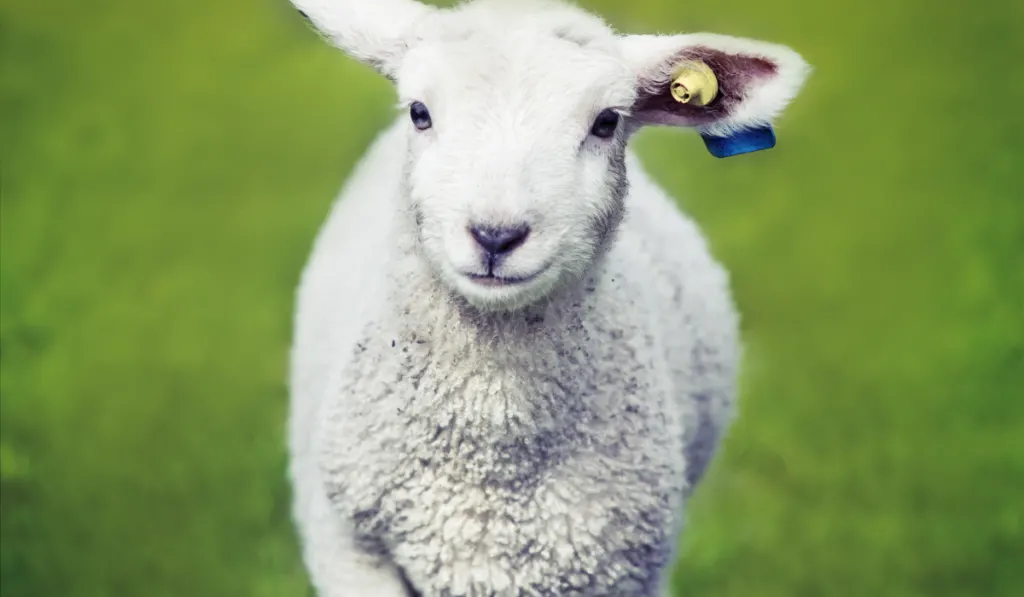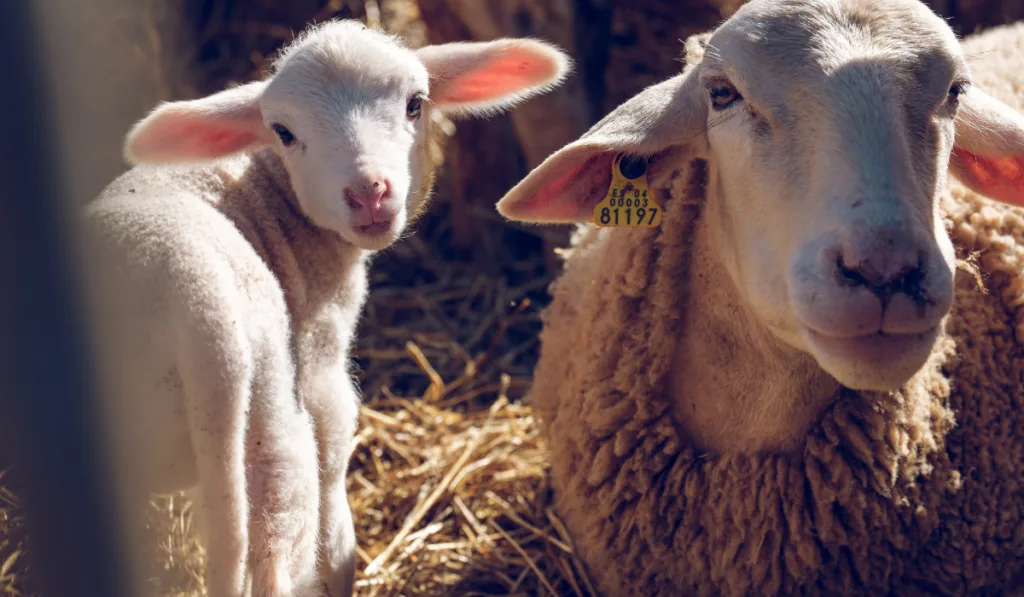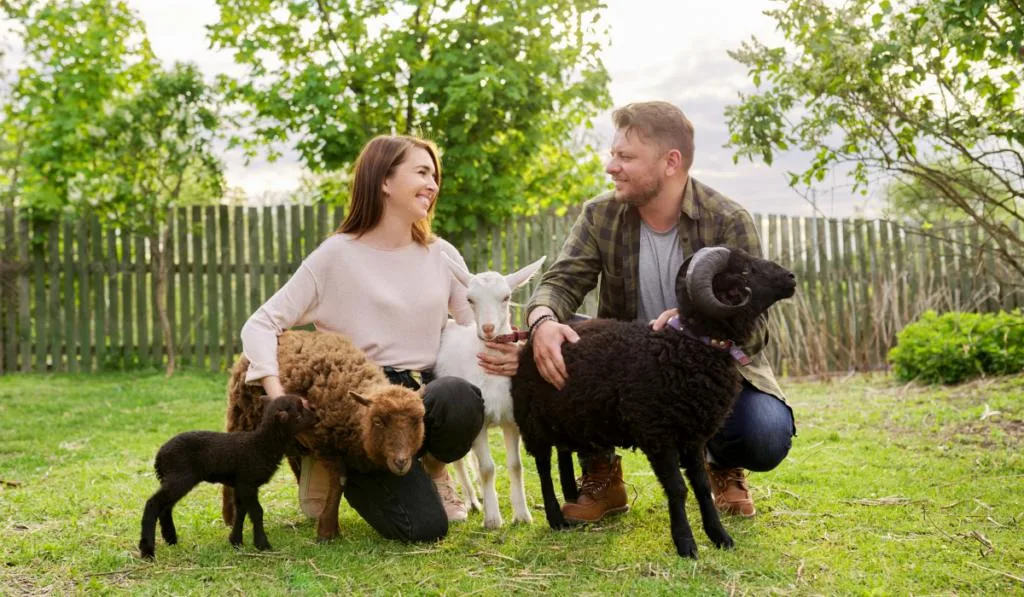Researchers have known for years that sheep express emotions but they’re often depicted as stoic animals.
We see videos of dogs herding them or a bunch of sheep gathered together in a field gnawing on the grass.
However, sheep have very expressive faces that change features when they are feeling emotions like excitement or fear.
Are sheep affectionate? Well, they aren’t like dogs. They aren’t even like cats.
Sheep tend to show their affection in different ways.
They’ll give you a snuggle while brushing up against you, but don’t expect them to start shaking and wagging when you walk up.
That doesn’t mean they aren’t happy to see you, they just show it in different ways.
Sheep can make a great family pet, but the most important things to consider when getting a sheep are size and disposition.

Certain types and genders of sheep will be better suited for your family than others.
Let’s talk a bit about choosing the right sheep for your home, how they show affection, and what you can do to make them lovely pets.
Table of Contents
Choosing the Right Sheep
If you’re up for it, raising a small lamb is the best way to form a long-term bond with your sheep.
Raising and feeding an animal from the time it was young will make it more inclined to show you affection.
There is a chance that older adopted sheep will view you as a source of food and affection will be harder to come by.
If you’re interested in getting a sheep as a family pet, there are also some things to consider.
First, think about whether you want a ewe (female) or a ram (male).
Rams will have a lot more testosterone, and they will grow horns. Sometimes rams show affection by playing with their horns.
That’s fine, but if your kids are trying to play with a 150 pound ram, they could get hurt.
They could also harm other animals you own.
Different breeds of sheep will grow to different sizes as well, so make sure you get something that’s manageable.
You can get a baby-doll Southdown sheep that are generally in a good mood and don’t grow very large.

How to Spot a Happy Sheep
Your sheep are going to show affection when they’re in a good mood, and you can spot when they’re feeling happy versus stressed or fearful.
When your sheep are happy, they will have their ears back and look relaxed.
Often, sheep that are in good moods keep their eyes barely open.
They’ll have an overall calm demeanor and won’t be skittish.
Forward ears, on the other hand, typically signify that your sheep is tentative or encountering a situation where they aren’t sure what’s going to happen or what they should do.
Generally, whether forward or backward, your sheep’s ears should move symmetrically.
If they are out of sync, it’s likely a sign of distress. They could be feeling fear, so you should do something to calm them down as quickly as possible.
The more exposure sheep get to humans and other animals, the more comfortable they will feel being calm and happy around them.
Don’t make sudden moves around your sheep and keep it well fed. If possible, make sure there is plenty of grass in the lawn for them to graze on and talk to them in soothing, low voices.
Spending time with your sheep is the best way to tell if they are happy.
You’ll learn to spot their demeanor and discern what emotions they are feeling.
You can adjust how you approach them, what treats you give them, and whether to bring the family dog around them, and eventually will learn how to best interact with your sheep.

Sheep Expressing Affection
Like we’ve already mentioned, sheep aren’t going to run up to you when you enter their area and jump up to lick your face.
That doesn’t mean they don’t love you and would rather you leave.
Sheep just show affection in a much more muted fashion than many other domesticated animals.
Done right, you can have a lifelong relationship with your sheep and get plenty of great sheep time.
Sheep are, in general, social animals.
They like to stick together for protection and to feel secure. If they feel like you are a source of protection, they will treat you like one of their own.
If you are outside in the field or the yard and your sheep walks up close to you or even brushes up on your leg, that’s a sign of affection.
It means they aren’t afraid and they don’t view you as a threat or predator.
Giving your sheep grain and other treats is a fantastic way to build a positive feedback loop with them.
They’ll associate you with pleasurable experiences and food!
Pretty soon, they’ll start jogging over to you once they notice you in the area.
Another sign of affection is if your sheep get hyper and start behaving excitedly when you’re around.
This happens most of the time with sheep that have been bottle-fed and raised from when they were very small.
A human can take on an almost parental role with the sheep.
If your sheep starts doing little hops or running circles when you’re around, you can take that as a sign of affection.
Finally, sheep who like you and want to show affection will come up to you to get pet and scratched.
Who doesn’t love a quick scratch?
You can scratch the top of their head or their legs and see how they respond.
Most sheep will love it and come running when they see you to get their daily dose of affection from you.
Resources
- http://livestocktrail.illinois.edu/sheepnet/paperDisplay.cfm?ContentID=1
- https://blog.farmsanctuary.org/2015/05/6-awww-inspiring-ways-farm-animal-moms-show-affection-for-their-babies/
- https://animalsandemotions.blogspot.com/2012/03/how-can-you-tell-your-sheep-is-happy.html
- https://www.thenakedscientists.com/articles/interviews/emotion-recognition-sheep
- https://animals.mom.com/sheep-loving-pets-2141.html
